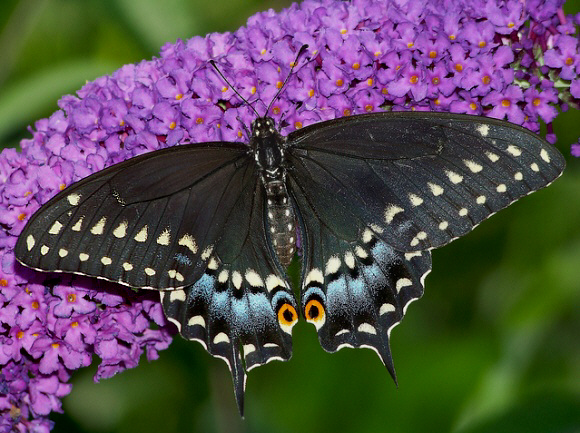
Introduction
Back in the 18th century when Linnaeus created the System Naturae, the word Papilio was used as the genus name for every known species of butterfly in the world. Since then much has been learnt about the relationships between different species. Consequently most have been reassigned to new genera, and only about 215 of the 17600 currently known species are retained in Papilio.
There are 30 Papilio species in the Australian region, 60 in the Oriental region, 40 in the Holarctic region and 54 in Africa. The taxonomy of North and South American ‘Papilio’ species has recently been revised, with the effect that almost all South American species and several North American species have been transferred to Pterourus or Heraclides. This leaves just 8 true Papilio species in North America i.e. the native brevicauda, machaon, zelicaon, polyxenes, indra and joanae; plus 2 alien species imported from the Oriental region: xuthus – a Chinese insect which was introduced to Hawaii, and demoleus which was imported into the Greater Antilles and has now begun to invade the southern states of the USA.
Papilio polyxenes is distributed from Canada to Peru and is also found on Cuba. There are 8 named subspecies, three of which occur in Mexico or the USA.
Habitats
This species is found in a wide variety of habitats including deserts, subtropical forest, deciduous woodlands, mountain valleys and city suburbs.
Lifecycle
The eggs are cream with a reddish brown ring and top. They are laid on the leaves or flowers of various umbellifers including Angelica, Anethum, Apium, Conium, Daucus, Cryptotaenia, Harbouria, Foeniculum, Heracleum, Levisticum, Ligusticum, Osmorhiza, Oxypolis, Ptilimnium, Petroselinum and Pastinaca; and also on Thamnosma, Ruta and Dictamnus (Rutaceae). The caterpillars when fully grown are green with black rings between the segments. Around the middle of each segment is a broken black band interrupted by orange spots. The pupa can be either green or straw coloured, and is attached vertically to a stem by the cremaster and a silk girdle.
Adult behaviour
On plains males perch on herbage to await and intercept passing females. In hilly or mountainous country both sexes fly to hilltops or ridges where courtship takes place. Copulation occurs after a brief chase, and lasts for about half an hour. Before and after mating males imbibe mineralised moisture from damp ground. Both sexes nectar at a wide range of flowers particularly favouring thistles Carduus and Cirsium.
